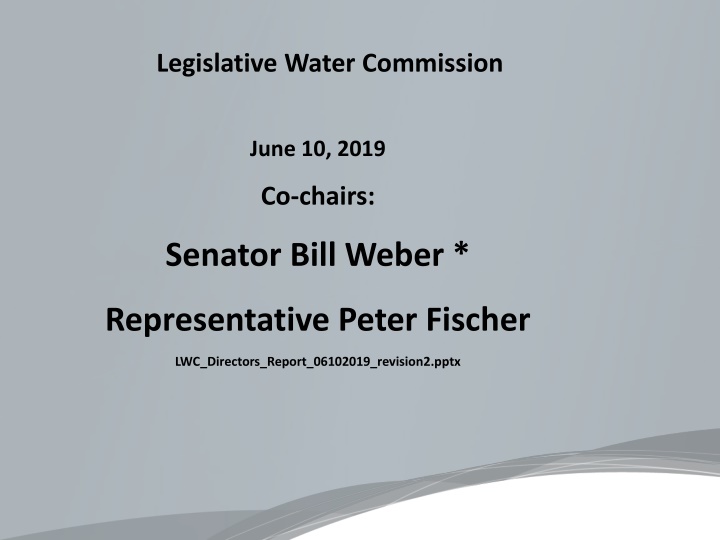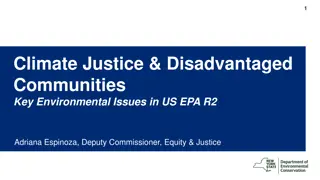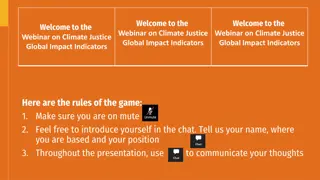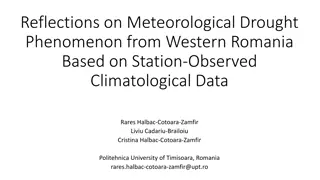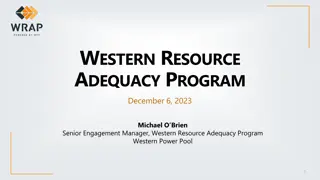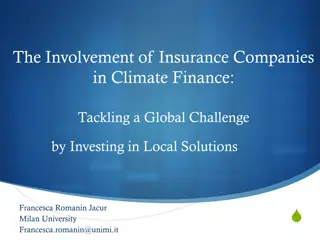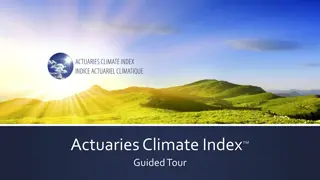Climate Justice in PNW: Importance of Western Redcedar
Pacific Northwest Indigenous culture values Western redcedar for totem poles and community houses. Recent studies show cedars are dying due to summer drought, affecting water transport and photosynthesis.
Download Presentation

Please find below an Image/Link to download the presentation.
The content on the website is provided AS IS for your information and personal use only. It may not be sold, licensed, or shared on other websites without obtaining consent from the author.If you encounter any issues during the download, it is possible that the publisher has removed the file from their server.
You are allowed to download the files provided on this website for personal or commercial use, subject to the condition that they are used lawfully. All files are the property of their respective owners.
The content on the website is provided AS IS for your information and personal use only. It may not be sold, licensed, or shared on other websites without obtaining consent from the author.
E N D
Presentation Transcript
Legislative Water Commission June 10, 2019 Co-chairs: Senator Bill Weber * Representative Peter Fischer LWC_Directors_Report_06102019_revision2.pptx
Introductions Body Sen Rep Sen Sen Rep Rep Sen Rep First Name Last Name Chuck Jeff Rich Kent Peter Josh Chris Todd Party District Home DFL 43 DFL 19A R 20 DFL 4 DFL 43A R 10A DFL 40 DFL 20B Northfield Wiger Brand Draheim Eken Fischer* Heintzeman Eaton Lippert Maplewood St. Peter Madison Lake Twin Valley Maplewood Nisswa Brooklyn Center Rep Rep Sen Sen John Paul Bill Michael Poston Torkelson Weber* Goggin R R R R 9A 16B 22 21 Lake Shore Hanska Luverne Red Wing
Agenda: Legislative Water Commission Approval of Minutes- April 1 Status of the LWC: Chairs Session Summary, Water Legislation- 2019 LWC Priorities issues for 2020 HF 2902: Combines CWC & LWC Trends in General Fund Spending 404 Wetland Permit Assumption Water-quality standards revision Consolidated Water Agency Summer Field Tour Adjourn
Status: Legislative Water Commission Senator Bill Weber Representative Peter Fischer
Agenda Item 2 Session Summary: 2019 Session Water-related legislation
Session Highlights LWC summary
2 2019 LWC Recommendations (Bill Recommendation and Status) 1) 2) 3) 4) 5) 6) 7) 8) 9) 10) Expanded source water programs 11) Increase drinking water protection Fee 12) Statewide Water Policy 13) Educational Curriculum- Water- K-12 14) Update and modifies Clean Water Act Provision Inflow and Infiltration-- Wastewater Healthy Soil/Healthy Water Water Infrastructure Peer review of wastewater standards Reduce excess chloride Continuation of the LWC Keeping Water on the Land Data, information, Education and Public Awareness Preserving and protecting our lakes
Agenda Item 3 Priorities for 2020
3 2020 Legislative Priorities Can we improve water-quality standard revision process? Is our water-management structure efficient compared to other states? One-Water Agency? Agency effectiveness changes, other than a major reorganization? HF 2902: Combining the CWC and the LWC Have general fund expenditures for the environment eroded? How can we better measure effectiveness of dedicated fund programs? How do environmental and water programs compare to other states? Benefits and consequences around 404 wetlands permit assumptions? Can there be better coordination among LWC, CWC, LSOHC ,LCCMR Are we effectively conducting water planning for future needs? Minnesota s most important water priorities? Can we prioritize conservation practices for the greatest benefits. How do we balance the value of protection versus restoration efforts Others?
Agenda Item 5 HF 2901: Combines CWC and the LWC
Status of General Fund Spending--Summary General fund spending for conservation has declined Even with dedicated funds, conservation spending has decreased Considering dedicated funding--MN is a leader Long-term continuation of dedicated funds is critical Understanding and communicating outcomes is critical Water outcomes are difficult to communicate Where would we be without CWFs?
Conservation Spending from the General Fund Decreased for 20 years Currently, at less that 1 % of general fund
ConservationSpending from the General Fund: 1991-2018 (Conservation Minnesota) .
Conservation Spending with Dedicated Funds Dedicated funds= Legacy and Trust Funds plus fees Has also decreased over 20 years Currently at about 2% of state budget
Conservation Spending General Fund and Dedications Funds: 1991-2018 (Conservation Minnesota)
Conservation Spending Compare to Other States? General fund spending for conservation: among the lowest, compared to other states
5 Where does MN Stand? Conservation Spending- General Fund: as a percentage of general funding (Environmental Council of States)
Minnesota Relies on Dedicated Conservation Dollars MN conservation funding is primarily for dedicated funding and from fees
Conservation Spending: Sources Other than from the General Fund: Fees and Dedicated Funds (Environmental Council of States)
Conservation Spending compared to Neighbor States Comparison is problematic There are several sources of information They tell differing stories To truly understand, we would have to dive deeply
Conservation Spending in the Midwest (2) Several and conflicting sources of information Per-capita spending is among the lowest in the Midwest (Council of State Governments)
Conservation Spending Per Capita Ballopedia Dollars 120 100 80 60 40 20 0 2011 2012 2013 2014 2015
Conservation Spending in the Midwest (2) More recent (mixed sources) tell a different story This is likely more realistic Includes all dedicated funds
Total Conservation Spending: 2013-17 Mixed Sources- Millions of Dollars 800 700 600 500 400 300 200 100 0 2013 2014 2015 2016 2017
Conservation Spending in the Midwest (3) The per-capita spending tells the same story
Conservation Spending Per Capita 250 200 150 100 50 0 2013 2014 2015 2016 2017
Sources of Conservation Spending (4) Minnesota: Relies more on dedicated funds Less on Federal Funds
Bottom line: Conservation Funding in MN General fund spending has declined Including dedicated funds, conservation spending still has decreased However, including the dedicated funds, MN is a leader, as least in the Midwest
Bottom line(2): Conservation Funding Conservation crisis without dedicated funds Understanding and communicating outcomes is essential for continued citizen support This needs to be a priority Action: Report back on status of outcomes
CWA: Wetland Permit Assumption BWSR would assume COE permit responsibilities (Section 404) Could save time and money May simplify permit process Staffing and costs need evaluation prior to implementation EQB planning fuds Action: Report back to you on next steps
Simplify the Water Quality Standard Revision Process Issue arose around specific conductance standard Revision process is cumbersome and long Need to identify roadblocks Process may be able to be made more efficient Staffing may be inadequate Input from agencies is a first step in improvement Report back efficiency changes--agency input
SF 2102: Dept. of Water Resources Minnesota s governance is complex Bill combines agency responsibilities Abolishes some agencies
SF 2102 (2): Department of Water Resources This has been studied Possible efficiencies and benefits to citizens Could be unintended consequences Many law and rule changes would be needed Reports offer thoughtful recommendations Topics needs discussion and planning over the interim
Suggestions: Dept. of Water Resources MPCA and UM have led evaluations: Reported to Legislature: Did not recommend major organizational change: Create interagency water-management system improve lateral coordination Use resources more efficiently Improved customer service (regional interagency customer advocate?)
SF2102 (3): Dept. of Water Resources Some recommendations are implemented Super agency: Might be more efficient Could create a simplified permit processes regional permit advocates? Might reduce organizational silos
SF2102: Dept. of Water Resources However, many laws, rules would need revision In some agencies, water is a component of larger mission, eg. Health and Agriculture Some agencies are constrained by delegated federal authority complicated and potential loss of federal funds? WI DNR is an example regional silos Action: Detailed discussion on advantages and unintended consequences with agency input
Closing Thoughts Continue to focus on 2020 priorities and specific actions for legislation Evaluate other priorities Proposed field CWC Next meeting?
